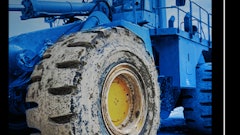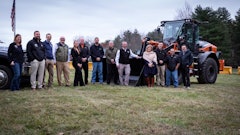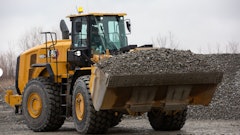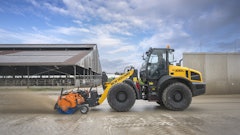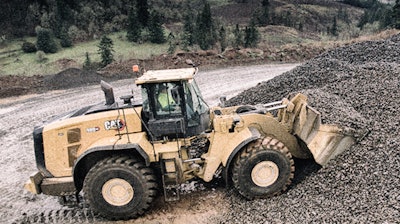
Construction sites. Asphalt and batch plants. Mill yards. Ports. Quarries. Sand and gravel pits. Steel mills. Waste yards. Is there anywhere you won’t find a wheel loader at work? Today’s loaders are so versatile and productive they’ve become an integral part of most jobsites. But they also come in so many sizes and configurations that choosing one for your application can be tricky. To get it right, start by asking yourself these five questions.
1. How much size and power is required?
Always consider the physical layout and ground conditions of your site and select a wheel loader that’s capable of maneuvering within these parameters. Then, be sure to define your payload or production targets and the range of material densities to be moved, so you can choose the right combination of bucket and loader to achieve your goals. It may seem counter-intuitive, but it usually makes sense to determine your bucket size first, then pick a machine that can accommodate it.
2. Will this loader interact with other equipment like trucks or hoppers?
If so, factor in load-over height and width requirements, pass-match volumes and cycle times when choosing your wheel loader. Also, consider whether your loader will maintain consistent and significant load-and-carry distances versus strictly working at the stockpile.
3. How many different tasks will this loader perform?
If you’re planning to put your loader to work on various jobs around the site, or on different types of sites, check on the number of attachments available. For maximum versatility, consider a machine with a quick coupler like this one for simple, speedy change-outs. On the other hand, if you’re adding a wheel loader to your fleet for a dedicated purpose, ask your equipment dealer about specialty configurations built for specific applications. Cat wheel loaders, for example, are available from the factory in aggregate, block handler, forestry, scrap, steel mill and waste arrangements.
4. Who will be operating and maintaining this loader?
How experienced are your operators? How much time and expertise do you have available for maintenance? The answers to these questions will help you determine the importance of factors like cab comfort, ease of serviceability, operator-assist features and technology options as you make your wheel loader selection.
5. What challenges could technology help overcome?
Speaking of technology, options like on-the-go weighing, automation and productivity tracking have expanded wheel loader payload capabilities, efficiency and safety significantly in recent years. If you’re having trouble finding seasoned operators – or experiencing issues with misloads, overloads, underloads or near misses – you’ll want to consider a loader with technology choices that can help you overcome these challenges.
Information is your most powerful selection tool, so before you head online or to the dealer lot to start kicking wheel loader tires, take a few minutes to answer these five questions. Doing so will help you narrow down your search, save time and make sure you select the wheel loader that’s most productive and profitable on your job.




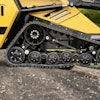
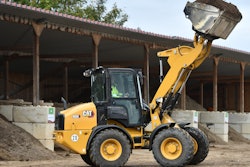
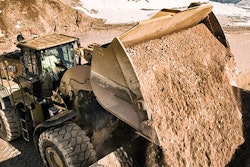
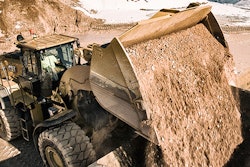

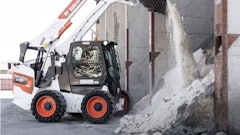



![Hcm Ax Landcros Dual Branded Logo[25]](https://img.forconstructionpros.com/mindful/acbm/workspaces/default/uploads/2025/11/hcmaxlandcros-dual-branded-logo25.Qhg3vUCjoK.jpg?ar=16%3A9&auto=format%2Ccompress&bg=fff&fill-color=fff&fit=fill&h=135&q=70&w=240)
